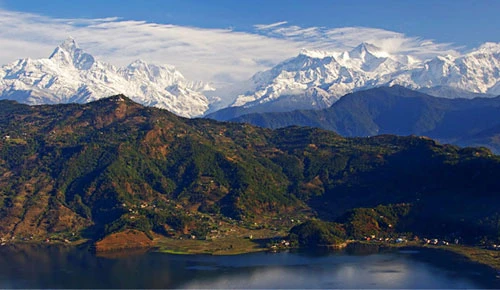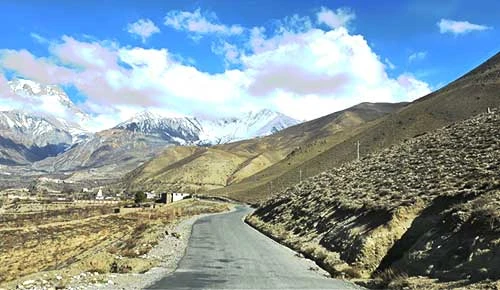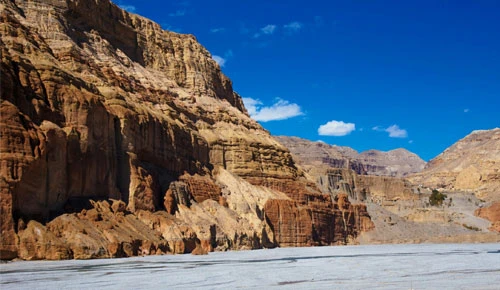Everest Base Camp Trek Altitude Acclimatization
At high altitudes, such as the Everest base camp trek, the air becomes thinner, resulting in lower oxygen levels. This unique environment poses challenges to the human body, making it crucial to understand the effects of high altitude and the significance of acclimatization.
High altitude typically refers to elevations above 2,500 meters (8,200 feet) and is further categorized into different levels based on altitude ranges. For instance:
- High Altitude: 2,500 to 3,500 meters (8,200 to 11,500 feet)
- Very High Altitude: 3,500 to 5,500 meters (11,500 to 18,000 feet)
- Extreme Altitude: Above 5,500 meters (18,000 feet)
Table of Contents
Effects of High Altitude

As you ascend to higher altitudes, the air pressure decreases, resulting in lower oxygen availability. The body's response to this change includes the following effects:
- Reduced Oxygen Levels
- Hypoxia
- Increased Breathing and Heart Rate
- Fluid Loss and Dehydration
- Altitude Sickness
Altitude Acclimatization and its Importance
Altitude acclimatization in the Everest base camp trek is the process of gradually adjusting to high altitudes to allow the body to adapt to the lower oxygen levels and atmospheric conditions. It plays a crucial role in ensuring a safe and successful high-altitude experience. Whereas an Everest base camp trek without acclimatization tends to increase the chances of altitude sickness in the trek.
The importance of acclimatization can be summarized by the following points:
- Enhances oxygen uptake and utilization for better bodily functions.
- Reduces the risk of altitude sickness, such as acute mountain sickness (AMS).
- Improves physical performance and endurance at high altitudes.
- Supports overall safety and well-being during the trek.
- Minimizes the chances of experiencing severe symptoms of altitude sickness.
- Optimizes oxygen delivery to muscles, improving stamina and reducing fatigue.
- Allows for a more enjoyable and rewarding trekking experience.
- Helps prevent altitude-related complications, such as high-altitude pulmonary edema (HAPE) and high-altitude cerebral edema (HACE).
- Provides time for the body to adjust to the changing altitude and atmospheric pressure.
- Enables the appreciation of breathtaking landscapes and cultural richness at high-altitude destinations.
Hiking to Everest Base Camp

Everest base camp is one of the most popular and iconic trekking trails in the world. It takes you through stunning landsapes and remote mountain villages, and offers breathtaking views of the Himalayas, including the majestic Mount Everest.
The trek usually starts from Lukla and follows a trail that passes through Namche Bazaar, Tengboche, Dingboche, Lobuche, and Gorak Shep before reaching base camp. The recommended trekking duration for the trek is around 12-14 days, allowing for proper acclimatization and enjoyment of the journey.
Along the way, there are designated acclimatization stops at places like Namche Bazaar, Dingboche, and Lobuche, where trekkers spend an extra day to allow their bodies to adjust to the increasing altitude.
Acclimatization strategies include gradual ascent, rest days, maintaining hydration, proper nutrition, and practicing breathing techniques to optimize oxygen intake. These strategies are essential for minimizing the risk of altitude sickness and ensuring a safe and enjoyable trekking experience.
Preparing for the Trek
Preparing for the trek involves several key aspects, like physical fitness and training, packing essential gear, mental preparation, and understanding the trekking route and duration. Prioritize physical conditioning through exercises and hiking practice.
Pack appropriate clothing, footwear, and gear for high-altitude conditions. Mentally prepare with a positive mindset and realistic expectations. Research and understand the trekking route to plan and pace yourself effectively.
Let's learn about the things you can do to prepare for the trek:
- Prioritize cardiovascular conditioning, strength training, and stamina building to prepare your body for the physical demands of high-altitude trekking.
- Packing essentials for high-altitude trekking include layered clothing, sturdy hiking boots, a backpack, a sleeping bag, and trekking poles to ensure comfort and safety during the trek.
- Conduct research, maintain a positive mindset, and be prepared for the physical and mental challenges of the trek.
- Choose a suitable trekking route based on your fitness level and preferences, and plan the duration considering recommended acclimatization schedules.
Acclimatization Strategies
Acclimatization strategies are crucial when trekking or spending time at high altitudes, such as Base Camp. These strategies help your body adjust gradually to the reduced oxygen levels and lower atmospheric pressure, minimizing the risk of altitude sickness and ensuring a safer and more enjoyable experience. Here are three important acclimatization strategies:
Gradual Ascent and Rest Days:
One of the key acclimatization strategies is to ascend gradually, allowing your body to adapt to the decreasing oxygen levels. It is recommended to follow a trekking itinerary that includes regular rest days at specific altitudes. Rest days give your body time to adjust and recover, promoting the production of red blood cells and improving oxygen-carrying capacity.
During rest days, it's essential to refrain from strenuous activities and focus on relaxing and acclimatizing. Engage in light activities like short walks to higher altitudes, exploring the surroundings, or simply resting. This gradual approach allows your body to adapt more effectively and reduces the risk of altitude-related illnesses.
Hydration and Nutrition Tips:
Staying properly hydrated and maintaining a balanced diet are crucial factors in acclimatizing to high altitudes. Drinking plenty of water helps combat the effects of dehydration, which can exacerbate altitude sickness symptoms.
Aim to drink at least 3-4 liters of water per day to stay hydrated. It's also beneficial to consume warm liquids like herbal teas or soup, as they provide hydration and warmth simultaneously.
In terms of nutrition, focus on a diet rich in carbohydrates, proteins, and healthy fats. Carbohydrates provide the necessary energy for trekking, proteins aid in muscle recovery, and fats contribute to insulation and temperature regulation.
Include foods like whole grains, lean meats, nuts, fruits, and vegetables in your meals. Avoid excessive intake of caffeine and alcohol, as they can contribute to dehydration.
Breathing Techniques for High Altitude:
Practicing specific breathing techniques can help optimize your body's oxygen intake and improve your overall acclimatization process. Two commonly used techniques are:
- Deep Breathing: Take slow, deep breaths, filling your lungs to their fullest capacity, and exhale slowly. This technique increases the oxygen exchange in your body, ensuring that your tissues receive sufficient oxygen.
- Pursed-Lip Breathing: Inhale through your nose for a count of two, then exhale slowly through pursed lips for a count of four. This technique helps regulate breathing and prevents rapid or shallow breaths, allowing for more efficient oxygen utilization.
It's essential to maintain a steady and consistent breathing pattern while trekking. Avoid overexertion and take frequent breaks to catch your breath if needed. By practicing these breathing techniques and maintaining a relaxed breathing pattern, you can optimize your oxygen intake and enhance your acclimatization process.
Remember, acclimatization is a gradual process that varies from person to person. Pay close attention to your body's signals, monitor your health, and consult with your trekking guide or medical professionals if you experience severe symptoms of altitude sickness. Prioritize safety and take the necessary precautions to ensure a successful and enjoyable high altitude trekking experience.
Recognizing and Managing Altitude Sickness
Altitude sickness, also known as acute mountain sickness (AMS), is a common condition that can occur when ascending to high altitudes too quickly. It is important to recognize the symptoms of altitude sickness and differentiate between mild and severe symptoms in order to take appropriate steps for managing the condition.
Here is a guide to help you understand and respond to altitude sickness effectively:
Symptoms of altitude sickness:

Mild Symptoms:
- Headache: A persistent, throbbing headache is one of the most common symptoms of altitude sickness.
- Fatigue: Feeling unusually tired or weak, even after rest, is another early sign of AMS.
- Loss of appetite: experiencing a decreased desire to eat, which can lead to reduced energy levels.
- Nausea or vomiting: Feeling queasy or experiencing an upset stomach may occur in some individuals.
Moderate to severe symptoms:
- Shortness of breath: Difficulty in breathing or experiencing breathlessness, even at rest.
- Dizziness or lightheadedness: Feeling unsteady or faint, often accompanied by a sense of confusion.
- Rapid pulse: An unusually fast heart rate, even during periods of rest.
- Difficulty sleeping: Insomnia or trouble sleeping due to discomfort or breathing difficulties.
- Coughing up frothy or pink mucus: This may indicate the presence of high-altitude pulmonary edema (HAPE), a severe form of altitude sickness
Steps to take if altitude sickness occurs
- Be aware of the signs of altitude sickness and monitor your physical and mental well-being throughout the ascent. Pay attention to how you are feeling and look out for any unusual symptoms.
- If you experience mild symptoms, it is important to halt further ascent and rest at your current altitude. Avoid climbing higher until your symptoms improve.
- If moderate to severe symptoms of altitude sickness manifest, it is crucial to descend to a lower altitude immediately. Descending by at least 500 to 1,000 meters (1,640 to 3,280 feet) can greatly alleviate symptoms.
- Once you have descended to a lower altitude, take the time to rest and allow your body to acclimatize. Drink plenty of fluids to stay hydrated and replenish electrolytes.
- If symptoms persist or worsen despite descending and resting, it is advisable to seek medical attention. Medical professionals at lower altitude locations or base camps are experienced in treating altitude sickness and can provide appropriate guidance.
- In severe cases, medications such as acetazolamide (Diamox) may be prescribed to alleviate symptoms and facilitate acclimatization. Supplemental oxygen may also be administered to relieve symptoms until descent is possible.
Note: Remember, prioritize your health and safety during high-altitude treks and consult with a healthcare professional before engaging in such activities, especially if you have a pre-existing medical condition.
Tips for Better Acclimatization
Acclimatizing to high altitude is crucial for a successful trekking journey. Here are some tips to improve your acclimatization process:
- Maintain a slow and steady trekking pace to allow your body to adjust gradually.
- Take regular rest days to give your body time to adapt to the altitude.
- Stay properly hydrated by drinking plenty of water throughout the day.
- Consume a balanced diet with sufficient carbohydrates and proteins to fuel your body.
- Avoid alcohol and smoking, as they can hinder your body's ability to acclimatize.
- Practice deep breathing techniques to improve oxygen intake and circulation.
- Consider taking medication such as acetazolamide (under medical guidance) to aid acclimatization.
- Pay attention to your body and rest if you experience any symptoms of altitude sickness.
- Dress appropriately for the conditions, layering your clothing to regulate body temperature.
- Prioritize quality sleep to allow your body to recover and adapt to the altitude.
By following these tips, you can enhance your acclimatization process and increase your chances of a safe and enjoyable trek.
Mental and Emotional Well-being at High Altitude
When you're trekking at high altitudes, taking care of your mental and emotional well-being is really important. It can be tough to deal with the physical and mental challenges that come with these environments. The air is thin, the weather can be extreme, and the physical effort is demanding.
To stay positive and motivated during the trek, it helps to practice mindfulness, focus on the present moment, and set small, achievable goals. Also, try to appreciate the beauty of nature around you and embrace the whole experience, even when things get tough. By taking care of your mental and emotional well-being, you'll have a better time and adjust to the high altitudes more successfully.
Post-Trek Recovery and Aftercare
Completing a high-altitude trek is an incredible accomplishment, but it's important to prioritize post-trek recovery and aftercare. Here are some key aspects to consider for a healthy and smooth recovery:
Importance of Post-Trek Rest and Recovery:
After pushing your body to its limits during the trek, it is crucial to allow sufficient time for rest and recovery. Your muscles and joints need time to repair and rebuild. Adequate rest helps prevent injuries and allows your body to regain its strength and energy. Consider the following:
- Allow yourself a few days of complete rest after the trek. Avoid engaging in strenuous activities or embarking on another trek immediately.
- Prioritize getting enough sleep and restorative downtime to allow your body to heal and recharge.
- When you resume physical activities, start slowly and gradually increase the intensity to avoid post-trek fatigue or overexertion.
Dietary Considerations for Recovery:
Nutrition plays a vital role in post-trek recovery. Proper nourishment helps repair muscle tissue, replenish energy stores, and support overall healing. Consider the following dietary considerations:
- Continue to drink plenty of water and fluids to stay hydrated, as proper hydration aids in muscle recovery and helps eliminate toxins from your body.
- Include sources of lean protein, such as chicken, fish, beans, and lentils, in your diet to aid in muscle repair.
- Consume a balanced diet that includes fresh fruits, vegetables, whole grains, and healthy fats to provide essential vitamins, minerals, and antioxidants for recovery.
- Avoid excessive alcohol and caffeine, as these substances can dehydrate your body and hinder the recovery process. Limit your consumption or avoid them altogether during the recovery period.
Long-Term Effects and Adjustments after High-Altitude Trekking:
High-altitude trekking can have long-term effects on your body. Understanding and addressing these effects is crucial for your overall well-being. Consider the following:
- While descending from high altitudes, your body needs time to readjust to lower oxygen levels. Be mindful of potential altitude-related symptoms during this period and seek medical attention if necessary.
- High-altitude trekking can improve your lung capacity, making it easier to breathe in thinner air. You may notice increased endurance in subsequent physical activities.
- Maintain a regular exercise routine to retain the fitness level achieved during the trek. Engage in cardiovascular exercises, strength training, and flexibility exercises to support overall health.
- Some trekkers experience a post-trek period of adjustment, as the intense and immersive experience of high-altitude trekking can create a sense of longing or a desire for new challenges. Allow yourself time to reflect, process, and adjust to your everyday life.
- If high-altitude trekking has become a passion, consider future treks and expeditions. However, always ensure you give your body ample time to recover between treks to prevent overexertion and potential health risks.
By prioritizing post-trek rest, following a nutritious diet, and being mindful of long-term effects, you can optimize your recovery and ensure a smooth transition back to your regular routine. Remember to consult with a healthcare professional if you have any specific concerns or questions regarding your recovery process.








